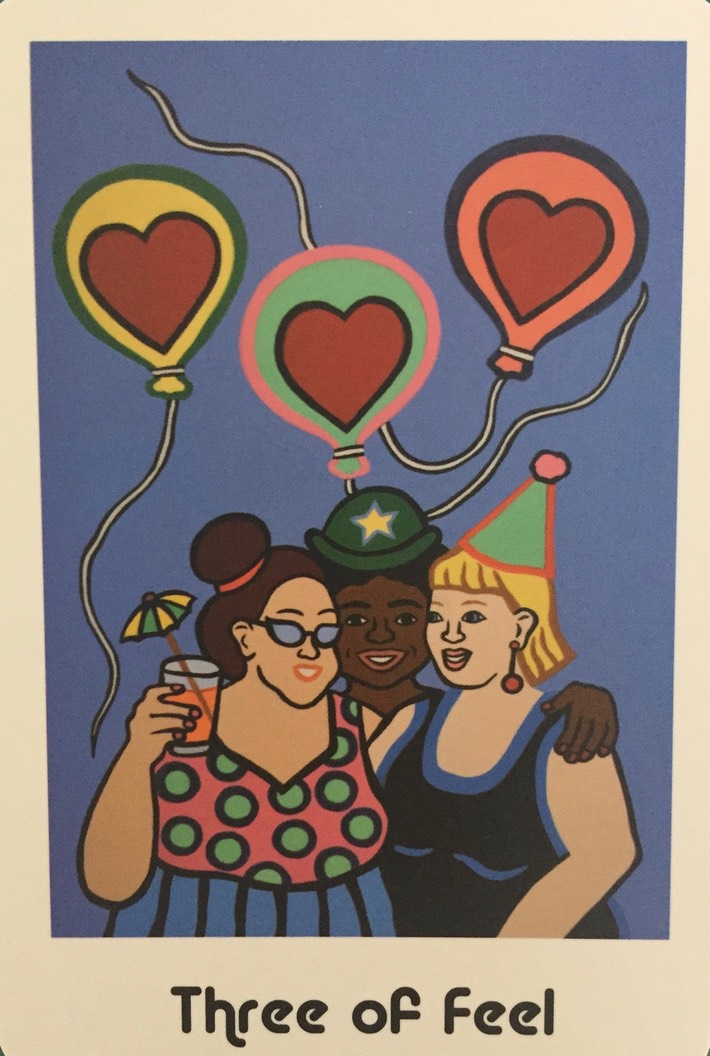By Maria Strom
So many people have great ideas for a Tarot deck! I hope that sharing my experience of developing Hip Chick Tarot helps you move your idea into reality.
You already love the Tarot. But ask yourself: What can I bring to the Tarot that’s helpful and original? You may have been practicing so long that you’ve developed a deep spiritual connection to the cards. Would your voice bring a deeper understanding or a new angle on the divinity found in the cards? You might have knowledge of something that you can combine with your love of Tarot. I’ve seen some beautiful decks that combine a passion for botanicals with Tarot. Or you may be an artist that can interpret the images and symbols in a fresh new way.
When I first started painting the images for Hip Chick Tarot, I was running a Tarot group and almost everyone in it was a woman. A lot of the women were new to Tarot and we were using Rider-Waite. There were a few that they couldn’t relate to. Most women readers know these cards, notably The Emperor and The Hierophant. For a lot of women, including myself, the traditional representation of these cards smack of patriarchy and top-down power dynamics. Yuck!
Don't get me wrong—I love the Rider-Waite Tarot. It’s the first deck I owned and I think it’s a great deck for beginners. After all, almost every deck is based on it, including Hip Chick Tarot. It’s just that I found myself asking my students to get past the image and focus on the energy that the card presented and I thought: Wouldn’t it be cool to paint an image that women would feel comfortable with right away?

So that’s what I did; I started painting cards with women in them. I wanted these women to look like the women in the group and other women that I knew and read for; I felt that was another way to make the deck “relatable”. The women in the deck are black, white, brown, Asian and mixed race. And they represent a variety of body types and ages. Also, I renamed some of the majors and the suits, giving them less medieval, more modern names; and the court cards became families of Queens, Bosses, Teens, and Children.
Then it came to writing the messages for the guidebook. I had been on the spiritual path for quite a while, and I knew that many women interested in Tarot were also spiritual seekers; so, I wanted the messages to acknowledge our spiritual journey and encourage us along the way. And I wanted to empower women in their everyday, practical pursuits, too. So, I created a “spiritual” and “practical” section for each of the major arcana. The way I see it is: Our spiritual lessons play out in our daily life. They are reflected in the way we treat ourselves and all of life around us. Often, I consult the Tarot to help me on my spiritual journey. And sometimes, I look to the Tarot for guidance about the stuff of life, like my business and my relationships. So, I wanted to include both messages, although, often they overlap.
In a nutshell, I approached my publisher with hand-painted and boldly colored cards that empower women to grow spiritually, be creative, feel freely, and think clearly all from a female perspective. That’s my idea. What’s yours?
